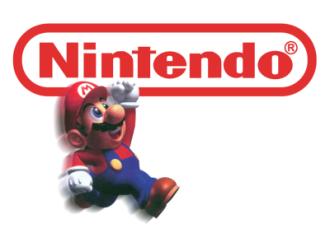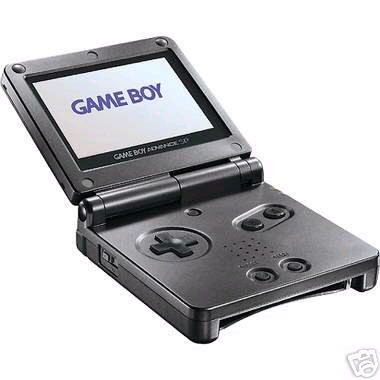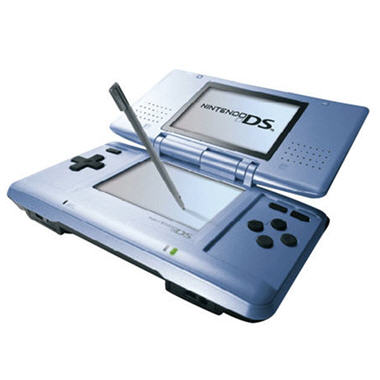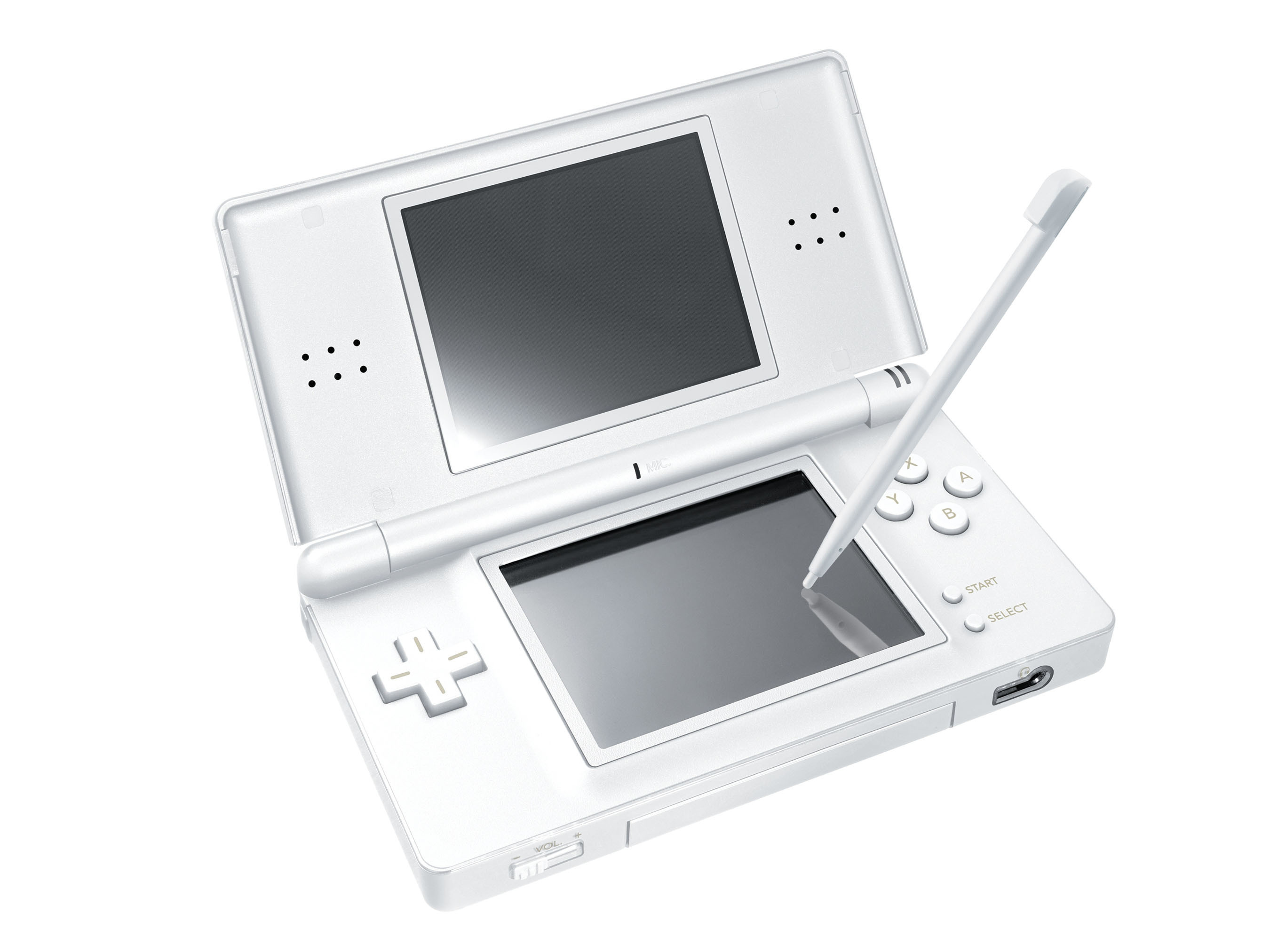Nintendo
From Ultimatewiki

Nintendo Company, Limited (任天堂株式会社 Nintendō Kabushiki-gaisha) is a multinational corporation founded on September 23 1889 in Kyoto, Japan by Fusajiro Yamauchi to produce handmade hanafuda cards. In the mid-twentieth century, the company tried several small niche businesses, such as a love hotel and a taxi company. Over the years, it became a video game company, growing into one of the most powerful in the industry. Aside from video games, Nintendo is also the majority owner of the Seattle Mariners, a Major League Baseball team in Seattle, Washington. They are also are the partial owner of the Atlanta Hawks, an NBA team in Atlanta, Georgia.
Nintendo has the distinction of historically being both the oldest intact company in the video game console market and one of the largest and well-known console manufacturers, as well as being the dominant entity in the handheld console market. As of December 1, 2006, Nintendo has sold over 387 million hardware units, and nearly 2.2 billion software units worldwide.
Contents |
History
Early life
Nintendo started as a small Japanese business by Fusajiro Yamauchi near the end of 1889 as Nintendo Koppai. Based in Kyoto, Japan, the business produced and marketed a playing card game called Hanafuda. The handmade cards soon began to gain popularity, and Yamauchi had to hire assistants to mass produce cards to keep up with the demand.
Middle life
In 1956, Hiroshi Yamauchi paid a visit to the US, to engage in talks with the United States Playing Card Company, the dominant playing card manufacturer in the US. Yamauchi was shocked to find that the world's biggest company in his business was relegated to using a small office. This was a turning point where Yamauchi realized the limitations of the playing card business. He then gained access to Disney's characters and put them on the playing cards, in order to drive sales.
In 1963, Yamauchi renamed Nintendo Playing Card Company Limited to Nintendo Company, Limited. The company then began to experiment in other areas of business using the newly injected capital. During the period of time between 1963 and 1968, Nintendo set up a taxi company, a "love hotel" chain, a TV network, a food company (trying to sell instant rice, similar to instant noodles), and several other things (including a toy remote controlled vacuum cleaner called Chiritory - which was later seen as a two-player game in WarioWare, Inc.: Mega Microgame$ in 2003). All these ventures failed, except toy making, where they had some earlier experience from selling playing cards. Then, after the Tokyo Olympics, playing card sales dropped, leaving Nintendo with a measly 60 yen in stocks.
Riddled with debt, Nintendo struggled to survive in the Japanese toy industry; it was still small at this point, and dominated by already well established companies such as Bandai and Tomy. Because of the generally short product life cycle of toys, the company always had to come up with new product. This was the beginning of a major new era for Nintendo.
In 1970, Hiroshi Yamauchi was observing a Nintendo hanafuda factory. He noticed an extending arm, which was made by one of their maintenance engineers, Gunpei Yokoi, for his own amusement. Yamauchi ordered Yokoi to develop it as a proper product for the Christmas rush. The Ultra Hand was a huge success, selling approximately 1.2 million units. Yokoi was soon moved from maintenance duty to product development.
The 1970s also saw the hiring of Shigeru Miyamoto, the man who (along with Yokoi) would become a living legend in the world of gaming and the secret to Nintendo's longevity; his creative vision was instrumental in determining the path Nintendo's future (and indeed, the video game industry as a whole) would follow. Yokoi began to mentor Miyamoto during this period of time in R&D, teaching him all that he knew.
Electronic era
Nintendo at this time saw how successful video games were and began to dabble in them. Its first step in that field was to secure the rights to distribute the Magnavox Odyssey in Japan, which it did in 1975. At the time, home video game consoles were extremely rare — even the seminal Atari PONG console had yet to be produced.
Nintendo's first video arcade game was 1978's Computer Othello; a large handful of others followed in the next several years, Radar Scope and Donkey Kong being among the most famous of these. The early 1980s saw Nintendo's video game division (led by Yokoi) creating some of its most famous arcade titles. The massively popular Donkey Kong was created in 1981 with Miyamoto as its mastermind, and released in the arcades and on the Atari 2600, Intellivision, and ColecoVision video game systems (although Nintendo itself generally had no involvement with these early console ports). This release method would be used on several later Nintendo arcade games of this same period, including the original Mario Bros. (not to be confused with the later Super Mario Bros.). In addition to this arcade and dedicated console game activity, Nintendo was testing the consumer handheld video game waters with the Game & Watch. Then, in 1985, Nintendo struck gold with its Nintendo Entertainment System and continued with the handheld gaming market with their highly successful Game Boy. Nintendo continued producing updates of these two concepts, leading it to become one of the world's most recognized video-game manufacturers.
Nintendo's main line-up of video-game systems currently include the Nintendo DS and the Wii.
Past Slogans
- Now you're playing with power! (1986 - 1992)*
- The best play here! (1992 - 1994)
- Play it loud! (1994 - 1996)
- Get N or get out! (1996 - 2000)
(*) This slogan was sometimes used slightly differently in commercials. When the commercial was for a Game Boy game, the slogan would be "Now you're playing with power...Portable power!", and if it was a commercial for a Super NES game, the slogan would be "Now you're playing with power...Super power!"
Gaming systems
Consoles
Color TV Game (1977 – 1980)
The Color TV Game Series were five different dedicated consoles.
Nintendo Entertainment System (NES) (1983 – 1994)
Nintendo Entertainment System, or NES, is an 8-bit video game console released by Nintendo in North America, Brazil, Europe, Asia, and Australia. Its Japanese equivalent is known as the Famicom (Family Computer). NES is the most successful gaming console of its time in Asia and North America, since Nintendo claims to have sold over 60 million NES units worldwide. It helped revitalize the video game industry following the video game crash of 1983 and set the standard for subsequent consoles in everything from game design (the first modern platform game, Super Mario Bros., was the system’s first "killer game") to business practices. The NES was the first console for which the manufacturer openly courted third-party developers.
The NES has sold 60 million systems worldwide.
Super Nintendo Entertainment System (SNES) (1990 – 2000)
The Super Nintendo Entertainment System, also known as Super Nintendo, Super NES or SNES, is a 16-bit video game console released by Nintendo in North America, Brazil, Europe, and Australia. In Japan it is known as the Super Famicom (Super Family Computer). In South Korea, it is known as the Super Comboy and was distributed by Hyundai Electronics.
The SNES was Nintendo's second home console, following the Nintendo Entertainment System. Whereas the earlier system had struggled in the PAL region and large parts of Asia, the SNES proved to be a global success, albeit one that could not match its predecessor's popularity in Northeast Asia and North America—due in part to increased competition from Sega's Mega Drive console (released in North America as the Genesis). Despite its relatively late start, the SNES became the best selling console of the 16-bit era.
The SNES has sold over 49 million systems worldwide.
Nintendo 64 (N64) (1996 – 2002)
The Nintendo 64, commonly called the N64, is Nintendo's third home video game console for the international market. It was released with three launch games in Japan (Super Mario 64, Pilotwings 64 and Saikyō Habu Shōgi) but only two in North America and PAL region (Super Mario 64 and Pilotwings 64). Other key titles included two Legend of Zelda games, GoldenEye 007, and Star Fox 64.
The Nintendo 64 has sold over 32.93 million systems as of March 31, 2005.
Nintendo GameCube (GCN) (2001 – 2007)
The Nintendo GameCube was Nintendo's fourth home video game console, belonging to the sixth generation era—the same generation as Sega's Dreamcast, Sony's PlayStation 2, and Microsoft's Xbox. Right up until the console's unveiling at SpaceWorld 2000, the design project was known as Dolphin— this can still be seen in the console and its accessories' model numbers. The GameCube itself was the most compact and least expensive of the sixth generation era consoles. The GameCube was the first Nintendo game console to use optical discs rather than game cartridges. An agreement with the optical drive manufacturer Panasonic led to a DVD-playing GameCube system named the Panasonic Q, which was only released in Japan.
The Nintendo GameCube has sold over 21.20 million systems as of September 30, 2006.
Wii (2006 – Present)
Wii (pronounced as the word "we") is Nintendo's seventh-generation video game console. Its official project code name was '"Revolution", and as with the Nintendo GameCube, this reference appears on the console and its accessories.
The major feature of the Wii console is the console's wireless controller, the Wii Remote, that may be used as a handheld pointing device and can detect motion and rotation in three dimensions. The controller comes with a Nunchuk accessory which provides additional controls, including more motion sensing. The controller also contains a speaker and a rumble device to provide sensory feedback, and can be used to turn the console on and off. The console also features a stand-by mode entitled WiiConnect24, enabling it to receive messages and updates over the Internet while consuming very little electrical power. The console is bundled with a game, Wii Sports, unusual for a games console of its era. In the Japan region, the Wii Sports game is not included with the console but is offered as a standalone title. The Wii has a feature called Virtual Console, which enables users to download retro games. The Wii has sold almost 4 million systems as of February 19th, 2007. The Wii, like the Nintendo GameCube, is the smallest and most compact system in its generation.
On December 15th, 2006, Nintendo announced that it would offer to replace wrist straps for 3.2 million Wii controllers. Consumers reported they were breaking during game play.
Portable
Game Boy (1989 – Present)
The Game Boy line is a line of battery-powered handheld game consoles sold by Nintendo. It is one of the world's best-selling game system lines, with more than 188 million hardware units sold worldwide. The original Game Boy has sold 70 million units, while the Game Boy Color sold 50 million units. The Game Boy Advance has managed to sell over 76.79 million units as of September 30, 2006. This latter system underwent two revisions without changing its game-playing functionality: a smaller SP model including a front-lit screen and rechargeable battery, and an even smaller Micro variant with a higher-quality backlit screen. Nintendo said of the Micro that they were not appealing to existing GBA owners, but new gamers who might see the tiny console as a fashion accessory. There is debate to whether the GB Micro is actually playable because the screen is too small.
Nintendo DS (2004 – Present)
The Nintendo DS (sometimes abbreviated NDS or DS, also as iQue DS in China) is a handheld game console developed and manufactured by Nintendo, released in 2004. It is visibly distinguishable by its horizontal clamshell design, which is almost a throwback to the Game & Watch, and the presence of two displays, the lower of which acts as a touch screen. The system also has a built-in microphone and supports WiFi standards, allowing players to interact with each other within short range (30–100 feet, depending on conditions) or over the Nintendo Wi-Fi Connection service.
The letters "DS" in the name stand for Developers' System, which refers to the features of the handheld designed to encourage innovative gameplay ideas among developers. Nintendo stated that it can also stand for Dual Screen.
On March 2, 2006, Nintendo released the Nintendo DS Lite, a redesigned model of the Nintendo DS, in Japan. It was later released in North America, Australia and Europe.
The Nintendo DS and Nintendo DS Lite have sold over 37 million systems as of February, 2007.
Other hardware
- Gameboy Camera - a monochrome camera cartridge for the original version of the gameboy, includes a simple picture editor and ability to print pictures via Game Boy Printer
- Broadcast Satellaview - Only released in Japan, an add-on for the Super Famicom (Japanese SNES) that allowed anyone to download games via a satellite.
- Game & Watch – A series of handheld games made by Nintendo from 1980 through 1991, which had a clock component and a very similar design to the DS.
- Game Boy Player – An adapter for playing Game Boy games on the GameCube.
- Game Boy Printer - An adapter designed for printing things from the Game Boy. It was used for printing out Pokémon information from the Pokédex in the Game Boy Pokémon games.
- iQue Player – A version of the Nintendo 64, with double the clock speed and downloadable games, released only in the Chinese market.
- iQue DS - A version of the Nintendo DS, release only in China.
- Nintendo 64DD – Only released in Japan, this add-on system's games are on re-writable magnetic disks. Games released include a paint and 3D construction package, F-Zero X Expansion Kit, for creating new F-Zero X tracks, a sequel to the SNES version of SimCity, SimCity 64 and a few others. A complete commercial failure, many speculated that Nintendo released it only to save face after promoting it preemptively for years.
- Pokémon Mini – Unveiled in London at Christmas 2000, the Pokémon Mini was Nintendo's cheapest console ever produced; with games costing £10 each, and the system costing £30. This remains the smallest cartridge-based games console ever made. Sales of this system were rather poor, but, unlike the Virtual Boy, Nintendo made a profit on every game and system sold.
- Mobile System GB - Released in Japan, December 14, 2000. The Mobile System is an adapter to play Game Boy Color games on the cell phone. The game Pokémon Crystal was the first game to take advantage of the Mobile System. Someone can hook an adapter to their Game Boy and connect it to a mobile phone which people can receive news, trade, and battle with other players across Japan.
- Pokémon Pikachu - A handheld device similar to the popular Tamagotchi toy that allowed the user to take care of Pikachu in the manner of a pet.
- Super Game Boy – Adapter for playing Game Boy games on the Super NES, which would be displayed in color.
- Triforce – An arcade system based on Nintendo GameCube hardware, developed in partnership with Sega and Namco.
- Virtual Boy – The Virtual Boy used two red monochrome displays to create a virtual reality-like system. Fewer than two dozen games were released for it in the United States. It is the only Nintendo game system to be a commercial failure.
- Yakuman – A handheld Mah-jong game released in 1983.
Offices and locations
Nintendo Company, Limited (NCL), the main branch of the company, is based in Kyoto, Kyoto Prefecture, Japan. Nintendo of America (NOA), its American division, is based in Redmond, Washington. It has distribution centers in Atlanta, Georgia, and North Bend, Washington. Nintendo Europe, the European division, is based in Großostheim, Germany.
Controversy
Over the past, Nintendo has been fined of fixed pricing, especially in Europe, where the European Union claimed that prices of Nintendo's products were too highly priced.





